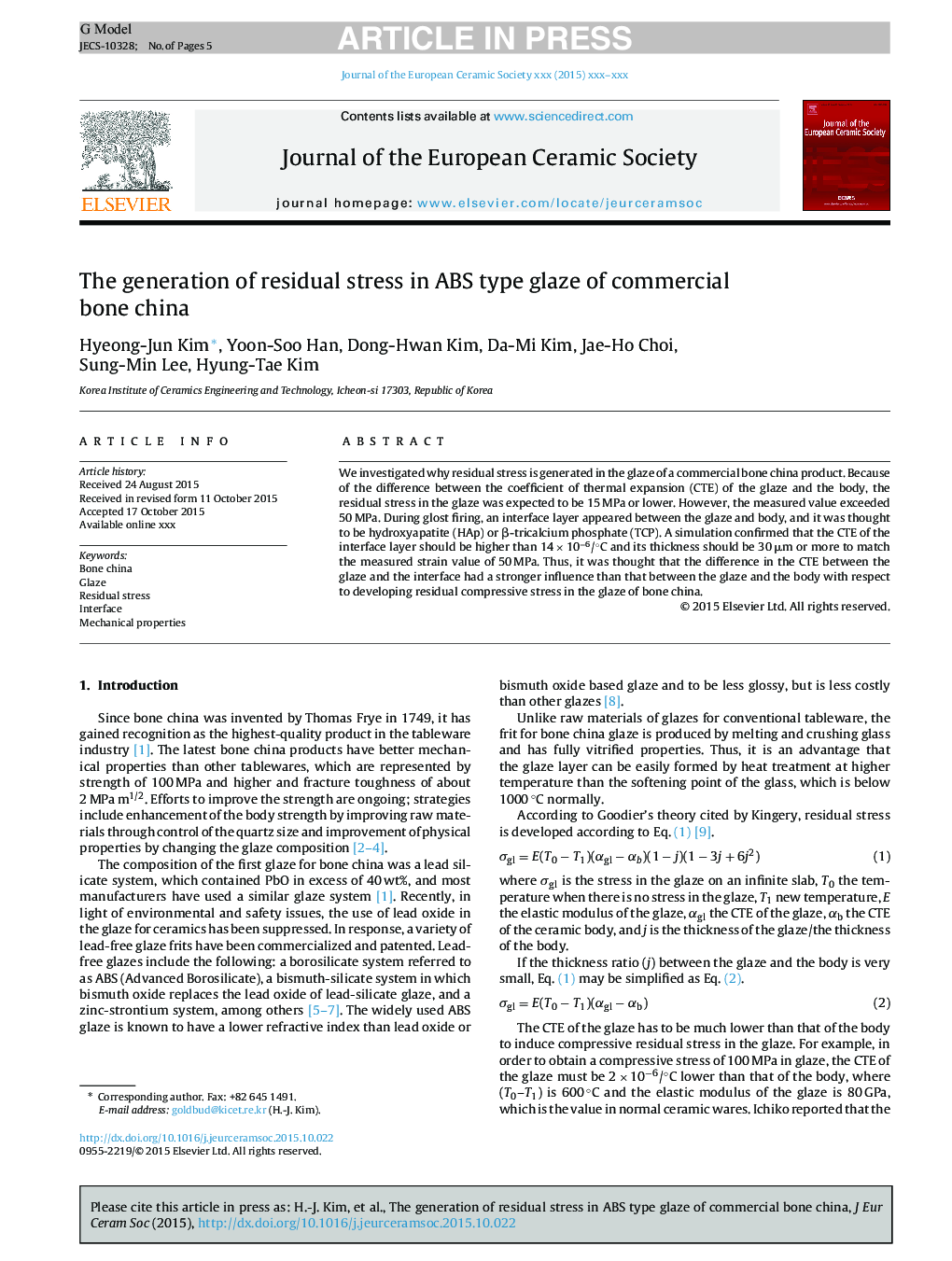| Article ID | Journal | Published Year | Pages | File Type |
|---|---|---|---|---|
| 10629447 | Journal of the European Ceramic Society | 2016 | 5 Pages |
Abstract
We investigated why residual stress is generated in the glaze of a commercial bone china product. Because of the difference between the coefficient of thermal expansion (CTE) of the glaze and the body, the residual stress in the glaze was expected to be 15 MPa or lower. However, the measured value exceeded 50 MPa. During glost firing, an interface layer appeared between the glaze and body, and it was thought to be hydroxyapatite (HAp) or β-tricalcium phosphate (TCP). A simulation confirmed that the CTE of the interface layer should be higher than 14 Ã 10â6/°C and its thickness should be 30 μm or more to match the measured strain value of 50 MPa. Thus, it was thought that the difference in the CTE between the glaze and the interface had a stronger influence than that between the glaze and the body with respect to developing residual compressive stress in the glaze of bone china.
Related Topics
Physical Sciences and Engineering
Materials Science
Ceramics and Composites
Authors
Hyeong-Jun Kim, Yoon-Soo Han, Dong-Hwan Kim, Da-Mi Kim, Jae-Ho Choi, Sung-Min Lee, Hyung-Tae Kim,
